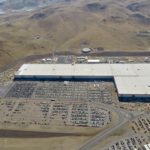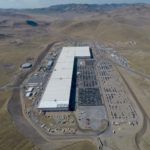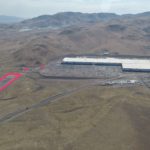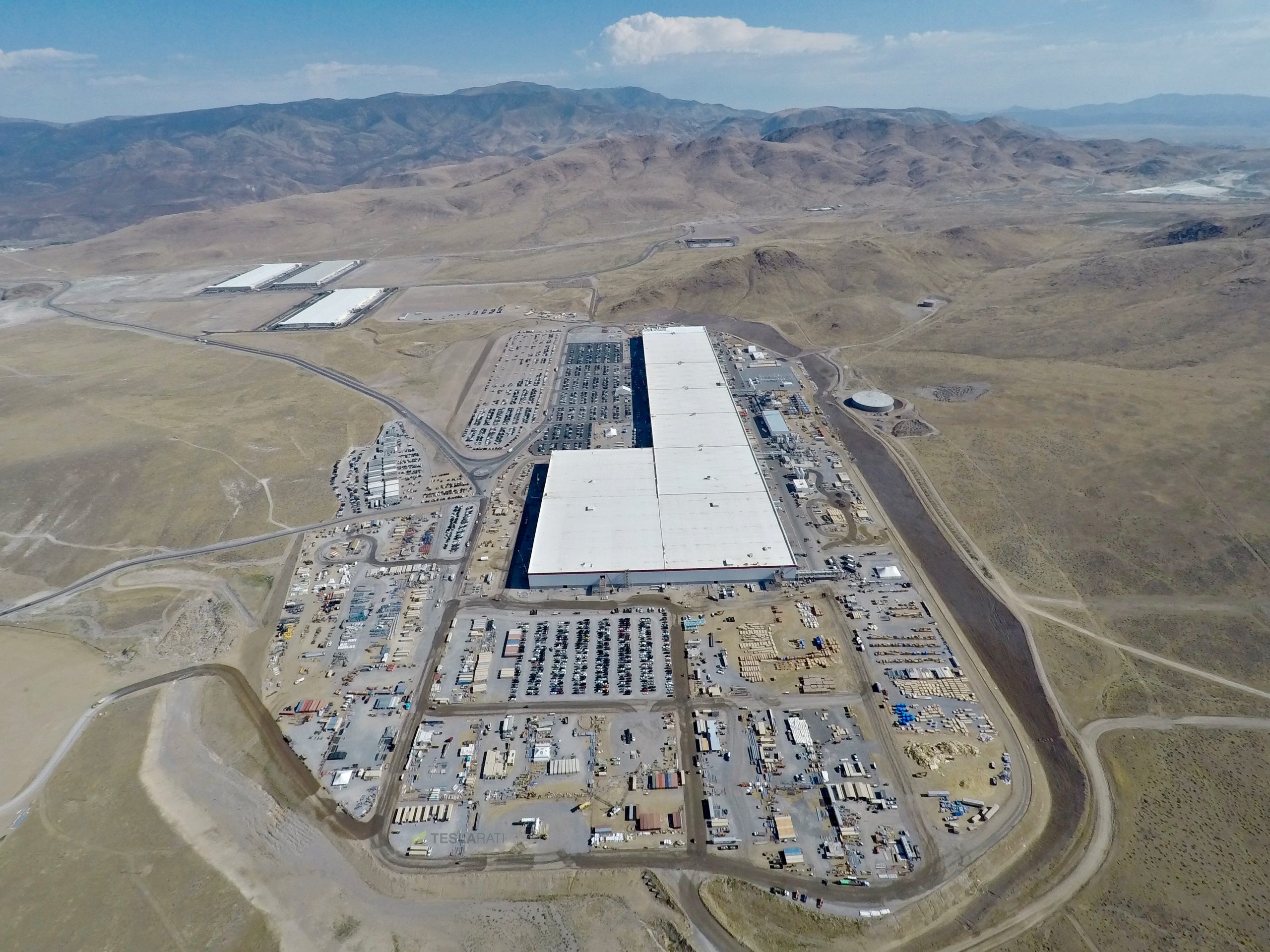
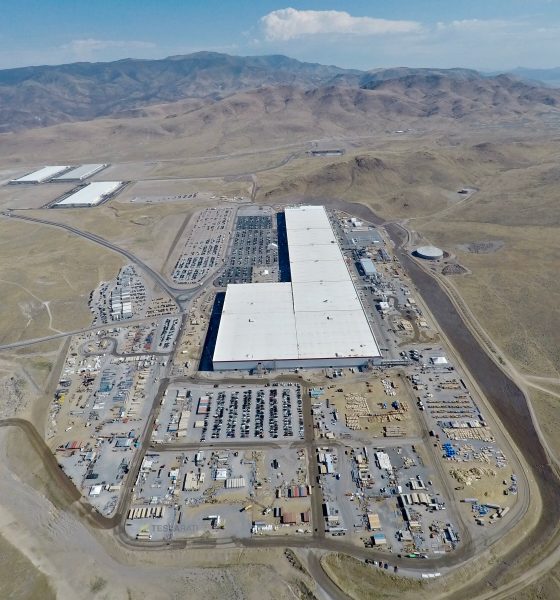
Energy
Tesla’s Gigafactory continues to reshape Reno: Transforming education, housing and the small business sector
Reno, a city just four hours away from Silicon Valley, has been home of Tesla’s Gigafactory – a city whose economy once chiefly relied on the low-wage casino industry, where bankruptcy and crime were frequent and unpredictable. Hit hard with the housing crash and recession, Reno fell into hard times in 2010 with a 14 percent unemployment rate. Once home to mostly thrifters and passersby, Reno’s outlook started to change with talks of Tesla’s plans for technological revitalization. Startups and incubators have been popping up to attract more millennials, new murals are being painted onto derelict walls, all are response to the hope that Tesla will be able to inject into the local economy sustainable, higher-paying jobs.
Tesla announced three years ago, in 2014, that construction would begin for its new Gigafactory in Reno, Nevada. As of now, battery cell production is well underway, and the factory has become the main production facility for Model 3 battery packs and drive units.
The introduction of Tesla into the region has not only infused Reno’s economy with jobs that have shifted it out of its economic drought, but also incentivized enrollment in neighboring schools, especially in STEM-related subjects. Nearby professors at the University of Nevada commented to eenews that the Tech Sector may be the area with the most secure employment base. The construction of the factory has provided over 4000 local jobs for the Reno economy, and will support close to 10,000 jobs when complete, up from a previous estimate of 6,500 jobs.
- Are we seeing a pathway leading from the main Gigafactory 1 facility leads to a new “parking lot”? [Photo: Teslarati]
Tesla Gigafactory flyover July 2017 captures parking lot expansion
This will in turn increase the retention rate at schools, both secondary and professional/university, creating a positive feedback cycle within the job sector and the education sector, thus securing the longevity of both. In fact, in 2013, a large part of the economic recovery was due to STEM jobs, driving unemployment down to 6.4 percent, reported the Atlantic. Additionally, STEM jobs pay from 28 to 68 more than non-STEM jobs.
The presence of Tesla is complemented by other tech companies such as Apple and Amazon, with more expected to come. It’s very likely that the landscape of Reno in the years to come will be vastly different than it was before the introduction of Tesla, and many experts and officials dub this the “Tesla Effect”.
Hillary Schieve, the Mayor of Reno, defined the “Tesla Effect” as “a positive shift toward changing Reno’s national perception for the better….Reno’s emerging neighborhoods, such as Midtown, downtown, and the Fourth Street corridor…due in large part to [the] booming technology industry with billions of dollars being invested from some of Fortune’s highest-ranked companies, which includes Tesla, Switch, Amazon and Microsoft.”
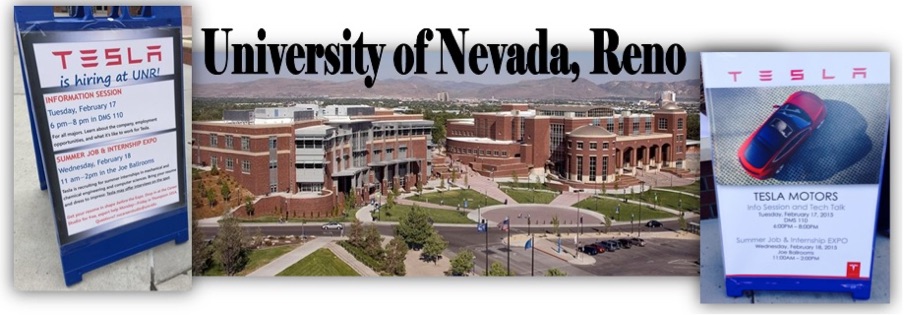
Tesla recruiting from the University of Nevada, Reno in 2015
The growth from the “Tesla Effect” extends beyond just the technology sector. Applied Economics presented a study in 2014 to Nevada Governor’s Office of Economic Development stating that “Tesla would be an important contributor to the region’s economy and could serve as a catalyst for additional manufacturing and logistics development in the region with its worldwide name recognition and cutting-edge technology. In addition, all of the jobs created by the company would be net new jobs thereby growing the economy both locally and regionally. The attraction of this company to Washoe County and Storey County would not only create a large number of new direct jobs, but also support a sizeable amount of additional economic activity, jobs and payroll at related local supplier and consumer businesses.” The study further broke down the revenues streams into different sections and explained where each calculated value was estimated from. You can see the full report here.
The presence of Tesla has pushed for market diversification within Reno. The building of the factory continues to draw in slews of local businesses to supplement the needs of both the factory and the people. Demands for food, supplies, gas and food will increase, bringing in more employment and more cash flow.
Drawing new businesses also could have the potential to diversify and infuse culture into the local neighborhood, highlighting flairs and quirks that will make it competitively attractive culturally to job seekers against neighborhoods such as the rich-cultured Austin.
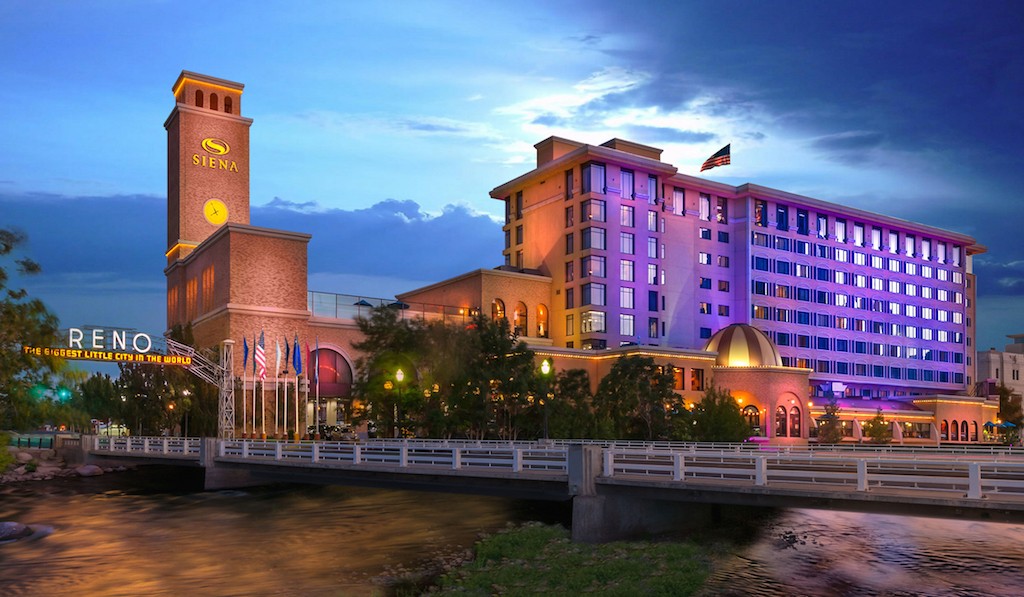
Siena Hotel Spa & Casino in Reno, NV outside of nearby Tesla Gigafactory in Sparks. Source: Siena Hotel & Casino
With neighborhood changes, come real estate changes. The median rent prices along with the amount of rentals saw a sharp spike followed by a steady increase beginning around February 2017, according to trulia.com. But while the tech boom creates a great demand for apartments and housing, the boom does not seem like it would expand into areas stricken by poverty and food deserts so far. According to the Atlantic, the boom has not yet worked to create enough affordable housing, possibly stratifying the inequality levels in correlation to distance from the tech center. The consequence could be creating a real-estate scenario similar to that of San Francisco’s. However, better local government regulations and sanctions could possibly ameliorate the problem, since the factory has not officially opened all of its doors yet to potential job-seekers.
With the influx of jobs and traffic, infrastructure and transportation will be greatly impacted. According to the Reno Gazette Journal, “USA Parkway’s still-unbuilt 16 miles to U.S. Highway 50 in Silver Springs will be “fast-tracked” to completion in as soon as two years, they said, opening up access to Lyon County and the Dayton Valley and to Carson City beyond”. Increasing the connectivity of the community may better bridge the divides between individual counties and neighborhoods, and between Reno and the outside world, facilitating more efficient transfers of material, information and persons.
With shifting concerns and economies, cities are made to be more adaptable to the different cultural, demographic and social climates. Jobs markets created by fossil fuels will meet diminishing futures in face of environmental and climate concerns. The redirection towards clean energy leaves white space for the development and creation of jobs in the clean energy technologies. Creating a technological oasis centered around sustainability in complement with the current economy will secure both long term and short term profits. It will insure a steady revenue stream for the state and poise itself for the transition into a green future.

Cybertruck
Tesla updates Cybertruck owners about key Powershare feature

Tesla is updating Cybertruck owners on its timeline of a massive feature that has yet to ship: Powershare with Powerwall.
Powershare is a bidirectional charging feature exclusive to Cybertruck, which allows the vehicle’s battery to act as a portable power source for homes, appliances, tools, other EVs, and more. It was announced in late 2023 as part of Tesla’s push into vehicle-to-everything energy sharing, and acting as a giant portable charger is the main advantage, as it can provide backup power during outages.
Cybertruck’s Powershare system supports both vehicle-to-load (V2L) and vehicle-to-home (V2H), making it flexible and well-rounded for a variety of applications.
However, even though the feature was promised with Cybertruck, it has yet to be shipped to vehicles. Tesla communicated with owners through email recently regarding Powershare with Powerwall, which essentially has the pickup act as an extended battery.
Powerwall discharge would be prioritized before tapping into the truck’s larger pack.
However, Tesla is still working on getting the feature out to owners, an email said:
“We’re writing to let you know that the Powershare with Powerwall feature is still in development and is now scheduled for release in mid-2026.
This new release date gives us additional time to design and test this feature, ensuring its ability to communicate and optimize energy sharing between your vehicle and many configurations and generations of Powerwall. We are also using this time to develop additional Powershare features that will help us continue to accelerate the world’s transition to sustainable energy.”
Owners have expressed some real disappointment in Tesla’s continuous delays in releasing the feature, as it was expected to be released by late 2024, but now has been pushed back several times to mid-2026, according to the email.
Foundation Series Cybertruck buyers paid extra, expecting the feature to be rolled out with their vehicle upon pickup.
Cybertruck’s Lead Engineer, Wes Morrill, even commented on the holdup:
As a Cybertruck owner who also has Powerwall, I empathize with the disappointed comments.
To their credit, the team has delivered powershare functionality to Cybertruck customers who otherwise have no backup with development of the powershare gateway. As well as those with solar…
— Wes (@wmorrill3) December 12, 2025
He said that “it turned out to be much harder than anticipated to make powershare work seamlessly with existing Powerwalls through existing wall connectors. Two grid-forming devices need to negotiate who will form and who will follow, depending on the state of charge of each, and they need to do this without a network and through multiple generations of hardware, and test and validate this process through rigorous certifications to ensure grid safety.”
It’s nice to see the transparency, but it is justified for some Cybertruck owners to feel like they’ve been bait-and-switched.
Energy
Tesla starts hiring efforts for Texas Megafactory
Tesla’s Brookshire site is expected to produce 10,000 Megapacks annually, equal to 40 gigawatt hours of energy storage.

Tesla has officially begun hiring for its new $200 million Megafactory in Brookshire, Texas, a manufacturing hub expected to employ 1,500 people by 2028. The facility, which will build Tesla’s grid-scale Megapack batteries, is part of the company’s growing energy storage footprint.
Tesla’s hiring efforts for the Texas Megafactory are hinted at by the job openings currently active on the company’s Careers website.
Tesla’s Texas Megafactory
Tesla’s Brookshire site is expected to produce 10,000 Megapacks annually, equal to 40 gigawatt hours of energy storage, similar to the Lathrop Megafactory in California. Tesla’s Careers website currently lists over 30 job openings for the site, from engineers, welders, and project managers. Each of the openings is listed for Brookshire, Texas.
The company has leased two buildings in Empire West Business Park, with over $194 million in combined property and equipment investment. Tesla’s agreement with Waller County includes a 60% property tax abatement, contingent on meeting employment benchmarks: 375 jobs by 2026, 750 by 2027, and 1,500 by 2028, as noted in a report from the Houston Business Journal. Tesla is required to employ at least 1,500 workers in the facility through the rest of the 10-year abatement period.
Tesla’s clean energy boom
City officials have stated that Tesla’s arrival marks a turning point for the Texas city, as it highlights a shift from logistics to advanced clean energy manufacturing. Ramiro Bautista from Brookshire’s economic development office, highlighted this in a comment to the Journal.
“(Tesla) has great-paying jobs. Not just that, but the advanced manufacturing (and) clean energy is coming to the area,” he said. “So it’s not just your normal logistics manufacturing. This is advanced manufacturing coming to this area, and this brings a different type of job and investment into the local economy.”
Energy
Tesla and Samsung SDI in talks over new US battery storage deal: report
The update was related by industry sources and initially reported by South Korean news outlets.

Recent reports have suggested that Tesla and Samsung SDI are in talks over a potential partnership to supply batteries for large-scale energy storage systems (ESS).
The update was related by industry sources and initially reported by South Korean news outlets.
ESS batteries to be built at Samsung’s Indiana plant
As noted in a report from Korea JoongAng Daily, the demand for energy storage systems has been growing rapidly in North America, thanks in no small part to the surge in AI investments across numerous companies. With this in mind, Tesla has reportedly approached Samsung SDI about a potential battery supply deal.
The deal is reportedly worth over 3 trillion Korean won (approximately $2.11 billion) and will span three years, according to The Korea Global Economic Daily. A battery supply deal with Samsung SDI could make sense for Tesla as the company already has a grid-scale battery, the Megapack, which is perfect for industrial use. Samsung SDI could simply supply cells for the EV maker.
Production of the batteries would reportedly take place at Samsung SDI’s joint venture factory with Stellantis in Indiana, which is currently under construction. Samsung SDI recently announced plans to use part of that plant’s EV lines to produce cells for ESS, with a targeted capacity of 30 GWh by the end of next year.
Tesla and Samsung’s partnership
At present, only a handful of manufacturers, including Korea’s LG Energy Solution, Samsung SDI, SK On, and Japan’s Panasonic, are capable of producing energy storage-scale batteries domestically in the United States. A Samsung SDI official issued a comment about the matter, stating, “Nothing has been finalized regarding cooperation with Tesla.”
The possible energy storage system deal adds another layer to Tesla’s growing collaboration with Samsung, which is already in line as a partner in the upcoming production of Tesla’s AI5 and AI6 chips. Early sample manufacturing of the AI6 is expected to begin in South Korea, with mass production slated for Samsung’s Texas-based Taylor foundry when it starts operations.
The AI6 chip will power Tesla’s next wave of high-volume projects, including the Optimus humanoid robot and the autonomous Cybercab service. Musk has called the partnership with Samsung a “real collaboration,” adding that he personally plans to “walk the line” at the Taylor facility to speed up progress.
